Well, forest is a bit of a stretch. Most of these small yellow birds prefer a mixture of trees, bushes and open spaces. You’re most likely to meet them along the edges of a forest or park. There are other yellow birds in Ontario. These are just some of the most commonly seen ones.
American Goldfinches Often Over-winter in Southern Ontario
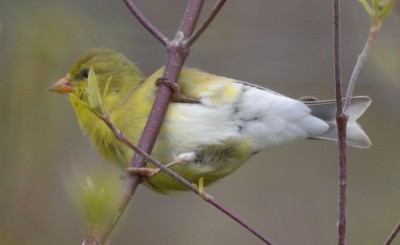
The short thick orange bill on this female American Goldfinch is a good field mark.
One familiar yellow bird is the male American Goldfinch. In late spring and summer, he sports shiny black wings and a small black cap.
His back and head are chrome yellow and can catch the sun from a surprisingly long way off. Female American Goldfinches are also yellow in the breeding season, but have much more green to their colouring. Their wings are darker but they don’t have a black cap. In the off season, Goldfinches fade to a greyish-green with patches of yellow depending on the stage of their moult.
Goldfinches like nyjer seed, which is a type of thistle seed, and are frequent winter visitors to bird feeders offering it. They will also perch precariously to eat seeds from dead stalks of Black-eyed Susans, Shasta daisies, Asters and Goldenrod. If you grow any of these in your garden, consider leaving a few stalks in place for the winter for the birds to feed from.
Yellow Warblers are Aptly Named
In late spring, usually late April or May, Yellow Warblers flock back to southern Ontario from their holidays to the south. As they zip around with enviable exuberance it can be hard to spot their field marks. If one calms down enough to perch, look first at the wings and head. No black cap and greenish not black wings means it’s not a male Goldfinch. Warblers also have a different shape of bill: it is narrower and longer than a Goldfinch’s beak.
If you’re looking at a male Yellow Warbler, it should have rusty red dash marks running vertically along its upper chest and sides.
Female Yellow Warblers are basically yellow all over with greenish wings. They don’t have the red marks or any black marks. Because the female’s yellow face is so plain, her black eyes show up quite clearly.
List most warblers, Yellows like to eat insects. They particularly like to hunt in thickets of low bushes and small trees. If you keep seeing a bright yellow bird in a thicket and can never get a really clear look, there’s a good chance it’s a Yellow Warbler.
Magnolia Warblers are Only Yellow on the Front
Another warbler that will catch your eye with its yellow is a Magnolia Warbler. (Apparently so named because the first one was shot dead out of a magnolia tree!)
The male Magnolia is chrome yellow underneath: it’s throat, chest, belly and under the tail area are all yellow. Its back, however, is greyish black with a white patch on the wing and an obvious white eyebrow and a black mask. Instead of red streaks on the breast, it has strong black lines, often two of them, running vertically down each side of the chest.
Female Magnolias have a yellow throat, chest and abdomen, without the strong black markings. Their backs are a light grey and they don’t have the white eyebrow.
As I discovered when it spread its tail to land, male Magnolias also have a wide white band across their tail. According to a website providing information for bird banders, this band can be used to help determine information about the age and sex of the warbler.
Magnolias forage for insects often in lower branches and even near the ground. It catches many insects on the undersides of leaves and needles.
In fall, younger Magnolia Warblers can have a pale grey necklace as shown in another page.
Other Little Yellow Birds
Of course this is just an introduction to the little yellow birds of southern Ontario. There are others out there you might meet, including
- Canada Warblers
- Cape May Warblers
- Nashville Warblers
- Pine Warblers
- Wilson’s Warblers
- Yellow-rumped Warblers
Ok let’s admit it, many warblers have yellow markings!
Some vireos and flycatchers also have yellow marks.
When in doubt, a good field guide, like Peterson’s or Sibley’s is your best resource.
Related Reading
Join In
Have you been watching warblers this weekend? Please share your experiences with a comment.

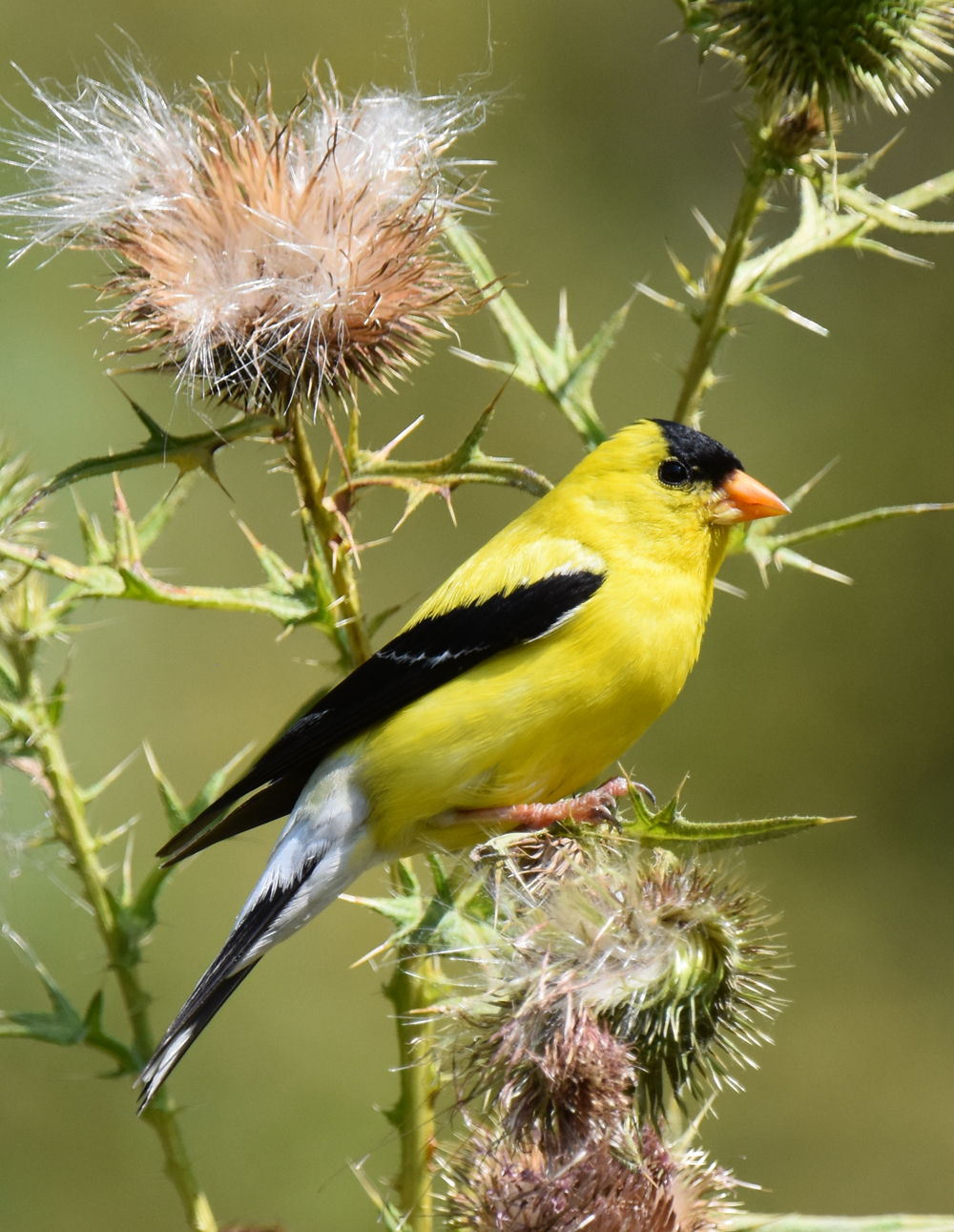
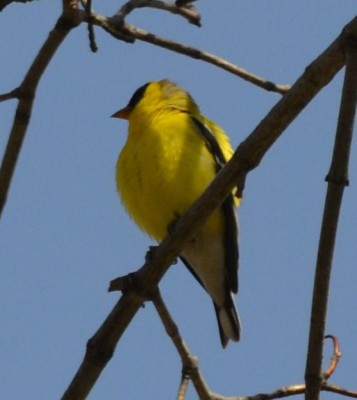
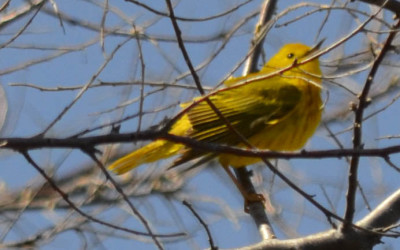
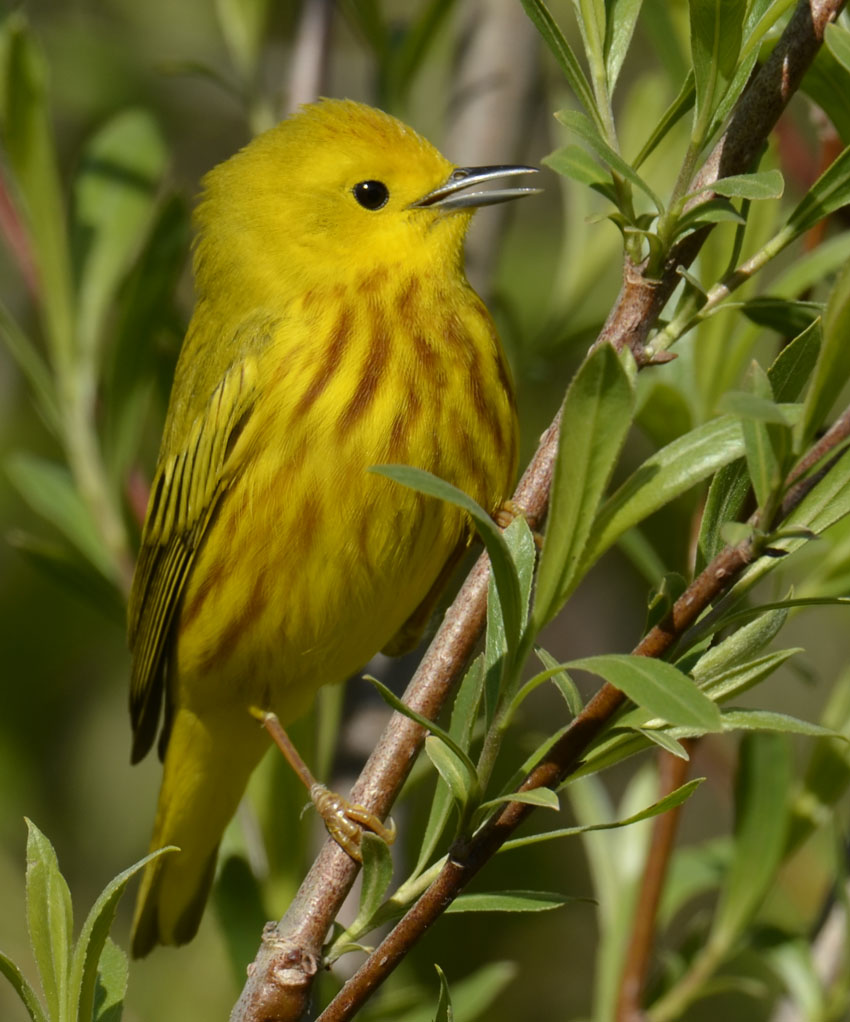
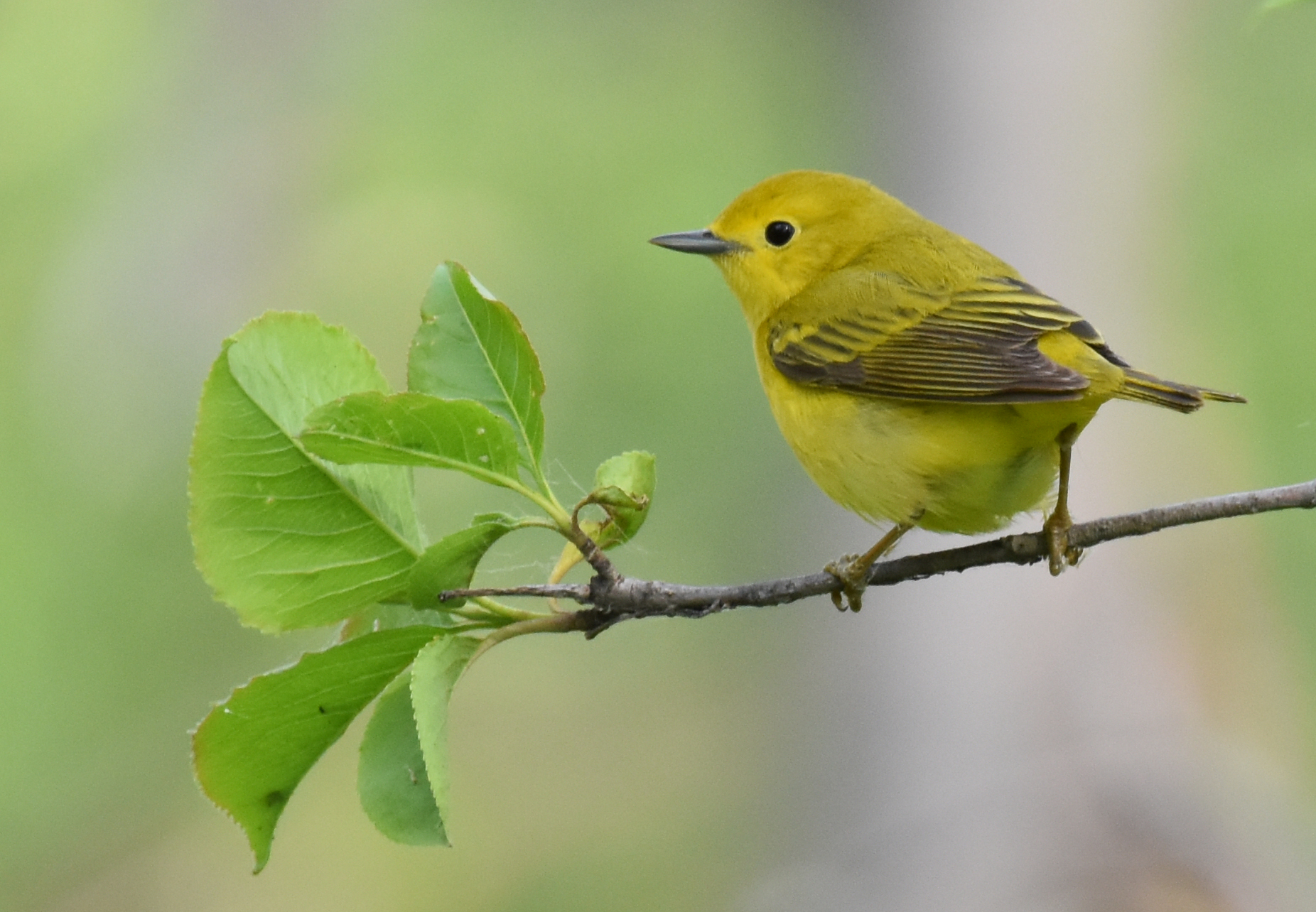
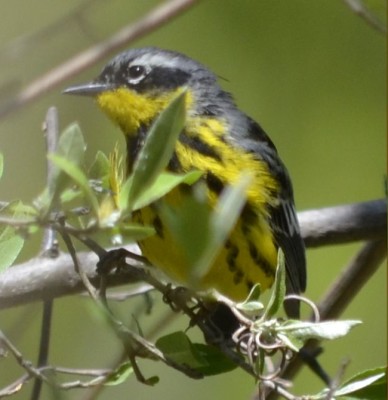

7 or 8 years ago we would have as many as 12 yellow finches on our birdfeeders. The number is decreasing yearly. I wonder why. We are in south part of Haliburton County, Ontario. in cottage country near a lake. We also no longer get grosbeaks, and I just realized I have not seen a bluejay yet this summer. What causes the decline?
Overall Goldfinches are not in decline so there may be some local changes that are impacting the population. Is it possible there is less vacant land where thistles can flourish? Thistles are a primary food source for finches especially when they are nesting. (Goldfinches nest much later in the summer than other birds because they need the seeds to be ready.) Bluejays do vary considerably year to year depending on the previous winter’s weather. It may have been a hard winter in your area?
There is always concern with migratory birds that changes in their wintering habitats could impact our summer Canadian populations.
There also was some rough spring weather this year along the migration routes.
If you want to help bird scientists who are studying changes in bird populations, there’s a website called eBird.org where you can report bird sightings. They look for trends and changes in reports.
One thing that is noticeably missing in many parts of Canada this year is Monarch butterflies. They appear to have suffered badly in the last year, although I haven’t heard any official reason why.
Sorry I don’t have any real answer for your question.
Yellow Warbler spotted in Bay area of Ottawa today June 4th 2020.
Sounds like it may be going to nest there!
Pretty sure I have a yellow warbler at my feeder this past week , 3 times they have been there , sunflower seeds at the feeder.
It is January … is that unusual?
They are a welcome visitor but I wonder if the warm weather threw them off migration?
Thank you
I suspect they might be American Goldfinches? https://www.allaboutbirds.org/guide/American_Goldfinch/id
It is possible to have a Yellow Warbler but not as likely. They prefer to eat insects and aren’t really designed to crack the larger seeds open. They do eat a lot of berries in the winter, though.
Saw three American Goldfinches this morning in the Music Gardens – waterfront downtown Toronto. Lovely! Thought they may have escaped from a cage as I’ve never seen them before here.
Perhaps someone has put up a feeder–they like very fine thistle seeds. There are also some migrating through Toronto right now. Thanks for sharing!